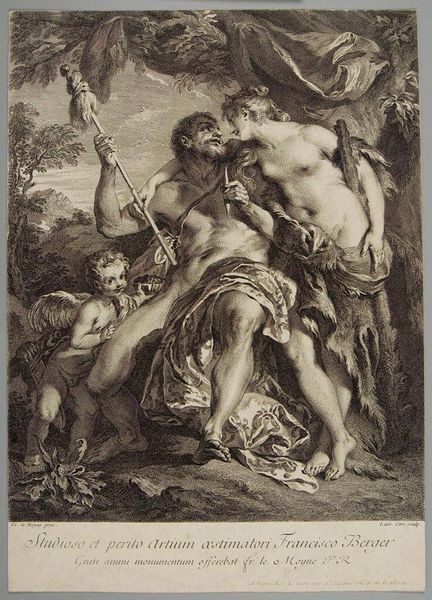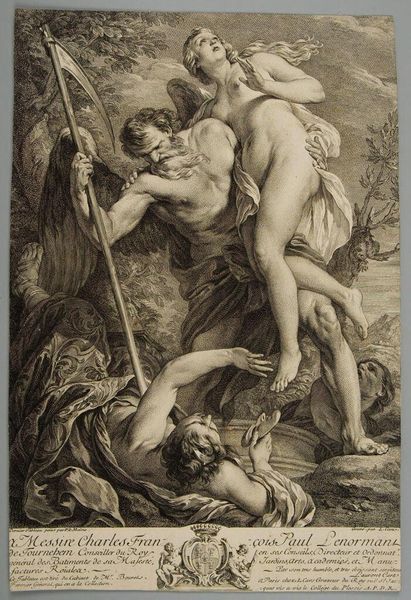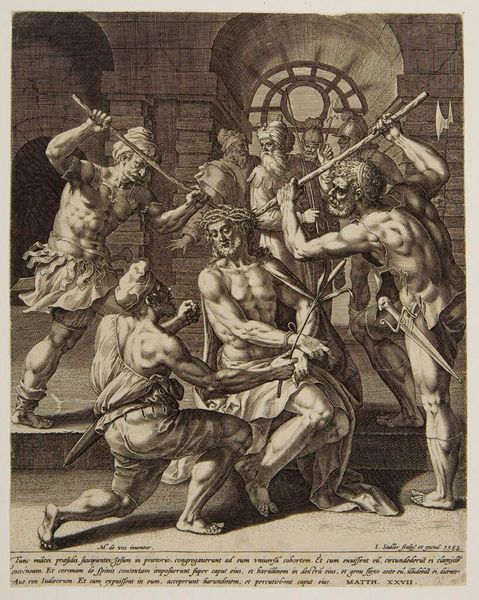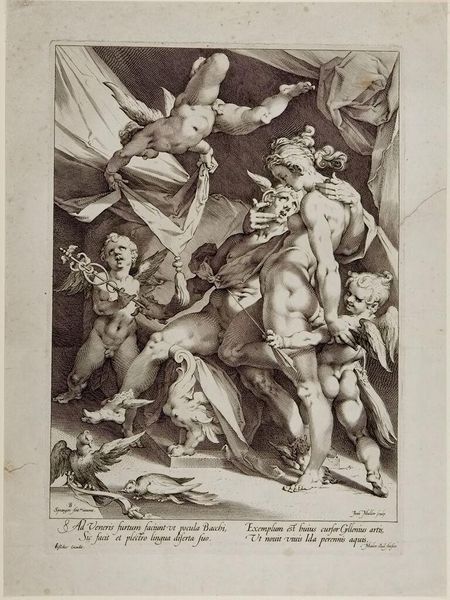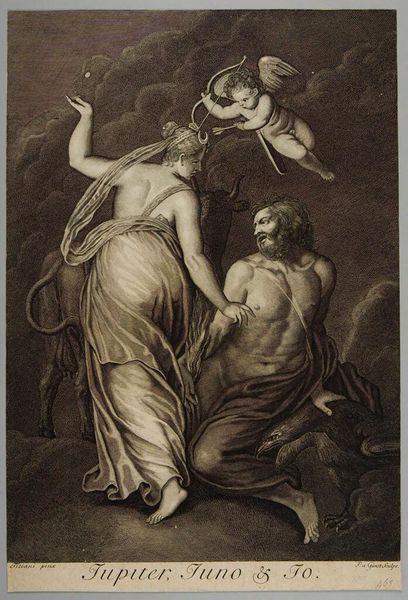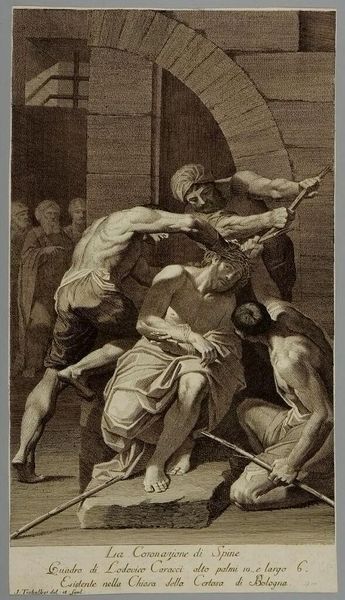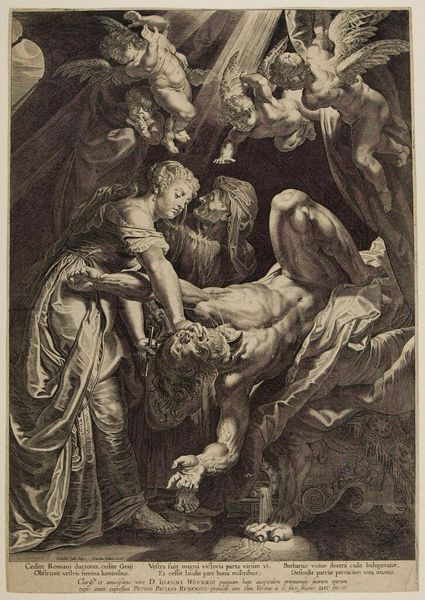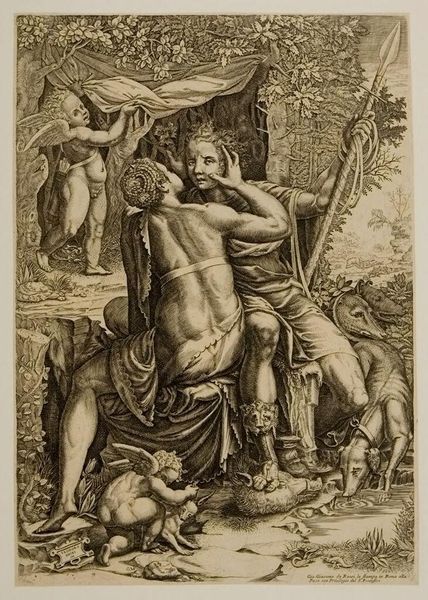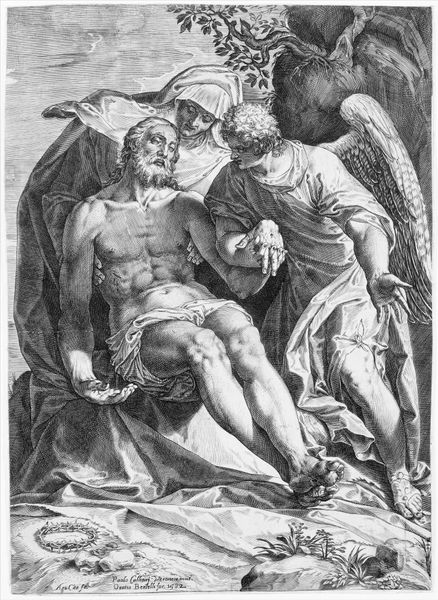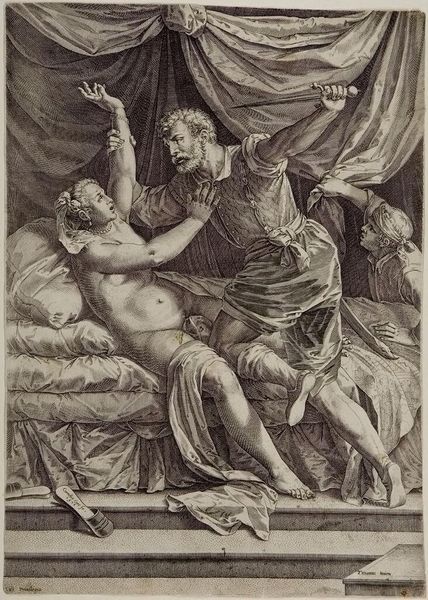
Aeneas Saves His Father from the Burning of Troy c. 17th century
Dimensions: Image: 34.5 Ã 25.2 cm (13 9/16 Ã 9 15/16 in.) Sheet: 39.7 Ã 25.5 cm (15 5/8 Ã 10 1/16 in.)
Copyright: CC0 1.0
Editor: Here we have Gérard Audran's "Aeneas Saves His Father from the Burning of Troy." The figures are rendered with such detail. What strikes you first about its composition? Curator: It's the pyramidal arrangement, isn't it? Note how the figures are carefully positioned to create a stable, almost classical structure. The interplay of light and shadow, achieved through the etching, further defines this structure, emphasizing the musculature and conveying a sense of dramatic tension. Do you observe how the gaze directs our own? Editor: Yes, Aeneas looking up, the child looking off to the right, it creates a sense of urgency and movement. Is that intentional? Curator: Precisely! The artist utilizes these devices to enhance the narrative. The strong diagonals created by the bodies imply motion and escape. Also note the textures, from the drapery to the skin – how do they contribute to your understanding? Editor: They add depth and realism. I hadn't considered how much the varied textures amplified the drama. Curator: Indeed. The formal elements reinforce the emotional weight of the scene. These choices by Audran are key to the work’s enduring impact.
Comments
No comments
Be the first to comment and join the conversation on the ultimate creative platform.
